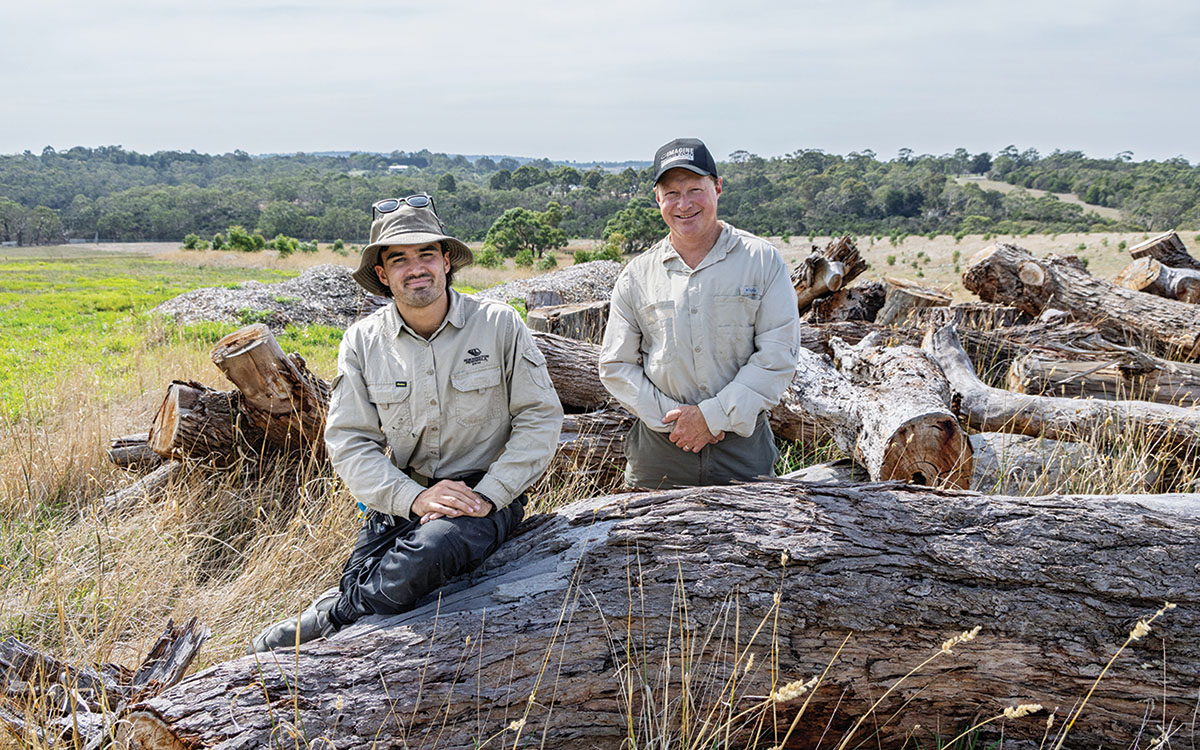A PROJECT to expand the size of the existing wildlife sanctuary at The Briars conservation park in Mt Martha is nearing completion with volunteers working hard to plant thousands of trees. The sanctuary, managed by the Mornington Peninsula Shire, will increase from 90 hectares to about 130 hectares with the community having already planted more than 7000 indigenous plants as part of revegetation efforts. According to a shire report, fencing of the new section is almost complete.
New walking trails for people of all ages and abilities, outdoor education nooks, quiet reflection nooks and educational signage including Aboriginal cultural stories will all be installed although designs and delivery of all paths and furniture are currently “pending”. A major focus of the sanctuary will be the reintroduction of locally endangered and extinct species through the ark program.
In 2021, the first Ark species, the Mount Martha Bundy (Eucalyptus carolaniae) was reintroduced. At the time, only 300 could be found in small pockets on the peninsula. The Briars now care for over 800 trees. Eighteen southern brown bandicoots have also been reintroduced to the sanctuary since 2017 and in January the first photographic evidence of a bandicoot with young in her pouch was captured.
The state government has contributed $1,527,680 towards the project via the Regional Tourism Investment Fund. The Shire contributed the remaining $763,840 to cover the total project value of $2,291,520.
While The Briars attracts some 200,000 people annually, the shire report (published in March) said “there are still many in the community not benefiting from this community asset as it is not accessible, nor does it currently offer the amenities many in our community need”. “The Briars has been identified as having huge potential to provide more benefits to the community, both through recreation activities and as a significant contributor to the local economy.”
Other projects, which will be delivered under stage two, include an arts and wellness precinct, heritage farm trail, a play garden, a gathering space featuring a café, children’s garden and visitor centre, and car park upgrades. Improvements will also be made to the on-site historic restaurant so it can be leased as a restaurant/café and function space. The council said detailed scoping of work requirements was underway.
In another major project, the heritage-listed homestead, built in 1846, will be restored at a cost of $950,000 with Heritage Victoria contributing $150,000. Works have been completed to repair termite damage and restore other parts of the homestead. “To re-open the homestead, further works to improve accessibility are required in order to be compliant with current legislation,” the shire report added. “A final scope of works and associated costs (for stage two) will be received in March – April 2025. Funding will then be sought for completion of the work,” the council report said. Upon the homestead’s restoration, the council hopes to reinstate guided tours and use the commercial kitchen and grounds for weddings, small functions and small events.
The Briars Master Plan Implementation Report was due to be considered by councillors at their 25 March meeting, which was rescheduled to 8 April. The business case stated the plan could have an economic impact of $14.49 million during construction and $10.51 million per year on the peninsula once operational. But with the plan and business case now five years old, “significant changes to the underlying economic and social conditions have occurred during that time,” the shire report said.
“It is critical that a review of the master plan be undertaken to confirm the underlying objectives, for example financial sustainability, and adjust the initiatives to meet these objectives. “The review is currently scheduled to begin mid-2025. Pending a budget bid, tourism economics and landscape architects will be engaged to ensure the revised plan is deliverable and meets council’s objectives and community expectations.” To date, the shire has funded $1.85 million in total for projects as part of the masterplan, which is on top of last year’s operating budget of $1.7 million.
Balcombe Estuary Reserves Group President Eric Smalley said that while BERG has no direct involvement in the Briars, working instead in the adjacent Balcombe Reserves, members were pleased to see the progress that has been made, particularly the Ark project and the extension of the sanctuary.“The extension involved considerable revegetation to which several BERG members volunteered their time. BERG hopes that the shire continues its commitment to weed eradication in the Briars as this will have a positive flow-on effect throughout the reserves,” he said.
First published in the Mornington News – 1 April 2025




